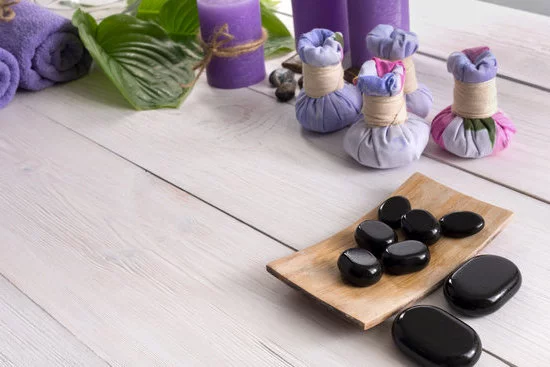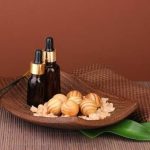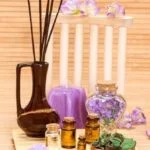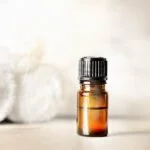How does color therapy and aromatherapy interact toward healing? Color therapy, also known as chromotherapy, and aromatherapy are both alternative healing practices that have been used for centuries. This article delves into the concept of color therapy and explores the healing powers of different colors. It also discusses the impact of essential oils in aromatherapy on the healing process and how these two practices complement each other.
Color therapy is based on the idea that different colors can have various effects on our emotions, moods, and even physical health. Each color is believed to vibrate at a specific frequency and can therefore be used to balance energy and promote healing.
On the other hand, aromatherapy utilizes essential oils to improve physical, mental, and emotional well-being. The smell receptors in our noses communicate with the parts of our brain responsible for emotions and memory, making essential oils an effective tool in promoting relaxation, reducing stress, and improving mood.
In this article, we will explore the interaction between color therapy and aromatherapy to understand how these two practices complement each other in promoting holistic healing. Additionally, real-life case studies will be presented to provide examples of how individuals have successfully utilized both color therapy and aromatherapy to aid in their healing journey.
Whether you are new to these alternative practices or looking to incorporate them into your daily life, this article aims to provide insight into harnessing the combined healing power of color therapy and aromatherapy.
The Concept of Color Therapy
Color therapy, also known as chromotherapy, is a complementary therapy that uses different colors to impact physical, mental, and emotional health. The concept of color therapy is based on the idea that colors have a vibrational energy that can affect the body and mind. Each color is believed to have its own healing properties and can be used to balance energy and promote overall well-being.
Understanding Color Associations
In color therapy, each color is associated with specific qualities and emotions. For example, red is often associated with vitality and strength, while blue is linked to calmness and relaxation. By understanding these associations, color therapists can use different colors to address specific needs or imbalances in their clients.
Application of Color Therapy
Color therapy can be applied in various ways, including through the use of colored lights, visualization exercises, and exposure to specific colors in the environment. Some practitioners also recommend wearing or surrounding oneself with certain colors to harness their healing benefits. Additionally, color therapy can be combined with other holistic practices such as meditation and aromatherapy for enhanced results.
When it comes to aromatherapy, the use of essential oils derived from plants has been shown to have a profound impact on mental and emotional well-being. Different essential oils are believed to possess unique therapeutic properties that can promote relaxation, improve mood, reduce stress, and enhance overall health.
The Role of Essential Oils
Essential oils interact with the olfactory system in the brain when inhaled or applied topically. This interaction triggers a variety of physiological responses that can influence mood, cognition, and emotional states. For example, lavender oil is known for its calming effects, while citrus oils are often used for their uplifting properties. Aromatherapists carefully select specific essential oils based on their client’s individual needs and preferences.
Integration of Color Therapy and Aromatherapy
When considering how does color therapy and aromatherapy interact toward healing? Both modalities share a common goal of promoting well-being by addressing imbalances within the body and mind. When combined, they can create a synergistic effect that enhances their individual healing properties. For example, using blue light during an aromatherapy session with lavender oil may amplify feelings of relaxation and calmness.
By exploring the conceptual framework behind both color therapy and aromatherapy as separate entities we will come to understand how combining these two powerful modalities can lead to even more significant therapeutic outcomes for individuals seeking holistic healing options.
The Power of Aromatherapy
Aromatherapy is a holistic healing treatment that uses natural plant extracts, such as essential oils, to promote health and well-being. These essential oils are extracted from various parts of plants and then distilled to create highly concentrated oils with distinctive scents. The practice of aromatherapy harnesses the therapeutic properties of these essential oils to improve emotional, mental, and physical health.
Essential oils have been used for centuries in various cultures for their medicinal and therapeutic benefits. As each essential oil has its own unique chemical composition, they can be utilized to alleviate a wide range of ailments, including stress, anxiety, insomnia, muscle pain, and even certain skin conditions. Essential oils can be used in a variety of ways, such as through inhalation (diffusion), topical application (massage or bath), or ingestion (under the supervision of a trained practitioner).
When it comes to healing, aromatherapy not only addresses physical discomfort but also focuses on the emotional and psychological aspects of well-being. The use of different essential oils can evoke specific emotions or mood states by stimulating the limbic system in the brain.
For example, lavender essential oil is known for its calming properties and can help reduce feelings of stress and anxiety, while citrus essential oils like lemon and orange are often used to elevate mood and boost energy levels.
Overall, aromatherapy plays a significant role in supporting holistic healing by addressing both physical and emotional well-being. Combining the use of essential oils with color therapy can further enhance the overall healing process by targeting different aspects of an individual’s health – physically, emotionally, mentally – thus creating a comprehensive approach to promoting wellness.
| Aromatherapy | Healing Impact |
|---|---|
| Relieves stress and anxiety | Essential oils like lavender induce relaxation |
| Improves mood | Citrus essential oils elevate mood and boost energy levels |
| Pain relief | Peppermint oil helps alleviate muscle pain |
Understanding the Interaction
Color therapy and aromatherapy are two holistic healing practices that work together to promote overall wellness. Each of these therapies uses different elements to enhance emotional, physical, and mental well-being. When combined, they create a synergistic effect that can amplify the healing process. In this section, we will explore how color therapy and aromatherapy complement each other and work in harmony to provide a holistic approach to healing.
Enhancing Mood and Emotions
Color therapy utilizes the power of different colors to affect mood and emotions. Each color has its own vibrational frequency that can stimulate different aspects of our being. Aromatherapy, on the other hand, uses essential oils to evoke emotional responses through the olfactory system. When used together, specific colors can be paired with complementary essential oils to create a powerful emotional impact, enhancing feelings of calmness, happiness, or relaxation.
Physical Healing and Well-Being
Both color therapy and aromatherapy have been shown to have physical healing benefits. Color therapy can be used in combination with specific essential oils to target physical ailments and promote overall well-being. For example, blue light has been associated with pain relief, while lavender essential oil is known for its calming effects on the body. By integrating these methods, individuals may experience a more profound healing response that addresses both their physical and emotional needs.
The Power of Intention
When utilizing color therapy and aromatherapy together, practitioners often set intentions for their healing sessions. This practice allows individuals to focus their energy on specific areas of improvement in their lives. The combination of visualizing a desired outcome while surrounded by specific colors and scents creates a powerful environment for manifestation and self-healing. By understanding how color therapy and aromatherapy interact toward healing, individuals can maximize their potential for positive transformation in all aspects of their lives.
By examining the interaction between color therapy and aromatherapy, it becomes clear how these two modalities can work together synergistically to optimize the overall healing experience for individuals seeking holistic wellness solutions.
Case Studies
Color therapy and aromatherapy have long been used as alternative healing methods, and many individuals have reported positive outcomes from incorporating these practices into their daily lives. Here are some real-life examples of how individuals have experienced healing through the use of color therapy and aromatherapy:
1. The calming effects of blue: Sarah, a high-stress individual, found that surrounding herself with the color blue during her daily meditation practice helped to alleviate her anxiety. Additionally, she incorporated the use of lavender essential oil, which further enhanced the calming effects of her meditation routine.
2. The energizing power of yellow: John, who struggled with low energy levels, discovered the revitalizing effects of yellow. By surrounding himself with this bright color and diffusing citrus essential oils in his workspace, he noticed a significant improvement in his mood and productivity throughout the day.
3. The soothing impact of green: Emily, who suffered from insomnia and general restlessness, turned to the color green and the use of chamomile essential oil to create a more tranquil atmosphere in her bedroom. This combination resulted in better sleep quality and reduced feelings of stress and agitation.
These case studies provide anecdotal evidence of the potential healing benefits that can be achieved through the combined use of color therapy and aromatherapy. They offer insight into how individuals can tailor these practices to address specific health concerns or wellness goals.
By understanding how these therapies interact toward healing-such as how certain colors can evoke specific emotions and how different essential oils can impact mood-the potential for holistic healing becomes even more apparent. As these examples demonstrate, integrating color therapy and aromatherapy into one’s daily routine has the potential to positively influence overall well-being on both a psychological and physiological level.
Practical Application
Color therapy and aromatherapy can be easily incorporated into your daily life to promote healing and well-being. One way to do this is by using colored essential oils in a diffuser.
For example, you can use a yellow oil such as lemon or bergamot for uplifting energy and mental clarity, or a purple oil like lavender for relaxation and stress relief. By choosing oils that correspond to the colors associated with specific healing properties, you can create a calming and therapeutic atmosphere in your home or workspace.
Another practical way to incorporate color therapy and aromatherapy into your daily routine is through the use of colored lighting in combination with essential oils. You can place colored light bulbs in various rooms of your home and diffuse corresponding essential oils at the same time.
For instance, using a blue light with eucalyptus oil for respiratory support, or a green light with tea tree oil for immune boosting effects. This combination allows you to experience the benefits of both color therapy and aromatherapy simultaneously, enhancing their individual healing properties.
Furthermore, wearing clothing or jewelry in specific colors that are associated with certain therapeutic effects can also be an effective way to incorporate both color therapy and aromatherapy into your daily life. For example, wearing orange clothing or accessories while using an orange-scented essential oil can help boost creativity and mood elevation. This simple practice allows you to carry the healing properties of color therapy and aromatherapy with you throughout the day.
The Science Behind the Healing
Color therapy and aromatherapy have been widely studied for their potential healing benefits, but how exactly do they interact toward healing? To understand this, it’s important to explore the psychological and physiological effects of both practices.
In color therapy, different colors are believed to have different energetic properties that can affect our mood, emotions, and overall well-being. For example, red is often associated with energy and stimulation, while blue is linked to calmness and relaxation. Understanding the psychological impact of these colors on our mental state is crucial in harnessing the healing power of color therapy.
Meanwhile, aromatherapy utilizes essential oils derived from plants to promote physical and psychological well-being. The sense of smell is directly linked to the limbic system in the brain, which influences emotions, behavior, and even long-term memory. This connection between scent and emotion is a key factor in understanding the psychological effects of aromatherapy.
When combined, color therapy and aromatherapy can complement each other in enhancing their individual healing effects. For example, using calming blue light therapy in conjunction with lavender essential oil can create a synergistic effect that promotes deep relaxation and stress relief. By understanding the psychological and physiological impact of these therapies individually and how they interact together, we can begin to harness their combined healing power more effectively.
Conclusion
In conclusion, the combination of color therapy and aromatherapy offers a powerful approach to healing that taps into both the visual and olfactory senses. By understanding the concept of color therapy and how different colors can impact our emotions and energy levels, as well as the power of essential oils in aromatherapy to influence mood and well-being, we can harness the full potential of these two modalities when used together.
The interaction between color therapy and aromatherapy is a harmonious one, as they complement each other in their ability to promote healing on both a psychological and physiological level.
When exploring real-life case studies of individuals who have experienced healing through color and aroma, it becomes evident that the combined use of these modalities can have profound effects on overall well-being. Whether it’s through using specific colors in their environment or incorporating essential oils into their daily routines, these individuals have found relief from stress, anxiety, and even physical ailments by embracing the power of color therapy and aromatherapy.
Incorporating color therapy and aromatherapy into our daily lives is not only practical but also accessible. From using specific colored clothing or decor to diffusing essential oils or creating scented blends, there are numerous ways to integrate these modalities into our routines.
By understanding the science behind their healing effects on our mind and body, we can optimize their benefits for our overall health and wellness. In doing so, we can truly harness the healing power of color therapy and aromatherapy combined.
Frequently Asked Questions
What Is Color Therapy for Healing?
Color therapy for healing, also known as chromotherapy, is a holistic healing practice that uses colors to promote physical, emotional, and mental well-being. It is based on the idea that colors have various frequencies and energies that can affect the body’s energy centers or chakras.
What Are the Healing Effects of Aromatherapy?
Aromatherapy is a complementary therapy that uses essential oils and aromatic plant compounds to improve a person’s physical, emotional, and spiritual well-being. The healing effects of aromatherapy include reducing stress, anxiety, and depression, relieving pain and muscle tension, improving sleep quality, and boosting overall mood and relaxation.
Is Aromatherapy Used in Healing Touch?
Aromatherapy is often used in combination with Healing Touch, a gentle energy-based therapeutic approach for health and healing. When used together, the soothing scents of essential oils in aromatherapy can enhance the healing touch experience by promoting relaxation, reducing tension, and creating a calming atmosphere for the recipient.

Are you looking for a natural way to improve your health and wellbeing?
If so, aromatherapy may be the answer for you.





